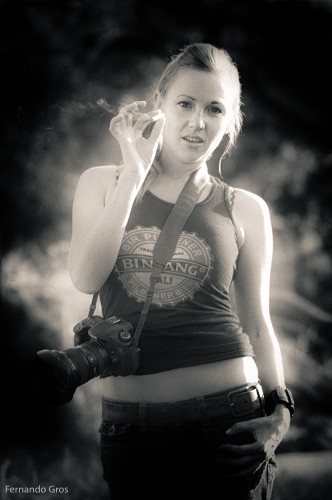Mugshots, Portraits & Liminality
Since I got into photography, in mid 2009, I’ve had the opportunity not just to take a lot of photos, but also to watch photographers while they take photos. In fact, it’s become something of a pastime, while on workshops, photo shoots, or just simply in day to day life. It is fascinating to watch […]
Since I got into photography, in mid 2009, I’ve had the opportunity not just to take a lot of photos, but also to watch photographers while they take photos. In fact, it’s become something of a pastime, while on workshops, photo shoots, or just simply in day to day life. It is fascinating to watch people make photographs.
In particular, I love to watch people create portraits. I remember the first time I saw David duChemin photographing someone, in 2010 in Leh, Northern India. We were tired and hungry, waiting for a meal, while seated outside small restaurant. The son of one of the people that worked in the restaurant was hanging around our table, obviously curious about this group of camera carrying weirdos.
David got out of his seat, crouched down to the kid’s eye level and struck up a simple conversation. It was such a relaxed, calm and graceful moment. For me it was a profound revelation; what stood between me and better portraits had little to do with my camera and a lot more to do with my way of relating to people and being in the world.
Forget Mugshots
That’s why I’m so glad to see that David has released a new eBook on portraiture, entitled Forget Mugshots (available through Craft & Vision). It’s a ten chapter, 35 page work that is ridiculously good value (you’ll pay 3-4 times as much for a photography magazine here in Asia and, for a limited time, you can get an extra discount with the promotional code MUGSHOTS4).
Forget Mugshots is very practical eBook. There’s lots of example images, with the process behind each photo well explained. There’s also some discussion of gear and creative exercises for you to explore.
But, the real lesson of Forget Mugshots isn’t simply about gear and technique; it’s about gear and technique in service of something far more important – the relationship between the photographer and the subject of the photo. As David says, great portraits arise out of a collaborative relationship between photographer and subject.
I saw that when David photographed that boy in Leh and in all the other portraits I saw him create in Ladakh and Oaxaca. It’s also something I’ve seen in the other talented photographers I’ve been privileged to meet and observe. Sure, they have a way with their camera, but more importantly, they have a way with people.
The Portraits
I have to admit that I also love Forget Mugshots because one of the mugs in there is my own. You’ll find me on page 18 of the eBook. I love that portrait because it says so many things. David suggests that my look “… implies a man who is observant, even distracted,” which is fair, given that when he noticed me I was deep in thought (taking in a scene that reminded me of Jarbas Agnelli’s Birds on the Wires).
Portraits And Liminality
David talks about great portraits involving an act of revelation. I agree with that. Portraits reveal their subjects, of course. But, they also reveal the way the photographer sees the world.
I’m starting to wonder if portraits involve some sense of liminality. I’ll admit that liminality is an uncommon word, but bear with me. It literately means being on the edge, or threshold of something. Liminality also implies the start, or first stages of a process.
Think of how it feels when you move to a new place or start a new job. At first it all feels strange and foreign. Then there comes a moment, before you are fully settled and at home, when you start move away from being an alien and start to understand this new place. That’s liminality.
Or consider that moment when you first start to realise that someone you’ve met is becoming a friend, that point when awkwardness is first staring to yield towards comfort. That’s liminality.
Liminality is all about feeling like you are on the edge of something big that you don’t quite understand yet.
An Example
Towards the end of my recent trip to Penang I had the chance to create a portrait of Sabina Mismas. Sabina is a newcomer to photography, but she has a remarkable feel for travel photography and I’m looking forward to seeing where her work goes.
I created this image fairly quickly. We were waiting for the rest of our group, off to the side of a carpark, near a temple (actually, near the trash dump behind the temple). The late afternoon light was wonderful and I pretty much imagined this image as you see it.
What I did is typical of my approach, a little bit of direction (with the camera out of view) and then I stepped back to take about 12 frames. I believe the element of trust and the spontaneity of the moment helped us create a casual image that works on a few different levels. I also love that the image is shot across the sun, the smoke blends with the background and I used the lens (a 105mm DC f2.0) to intentionally create a soft-focus effect (pin-sharp images are so over-rated).
It was less than 18 months from when I first saw David shoot a portrait in Leh, to when I created that image of Sabina in Penang. It’s been a hell of a ride. A lot of what I’ve learnt is available for you to explore in Forget Mugshots.. And, most of the rest is out there waiting for you, as you create your own portraits.





